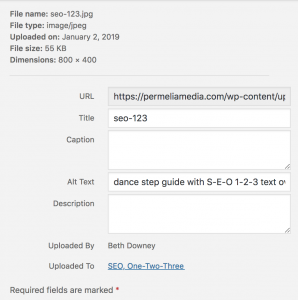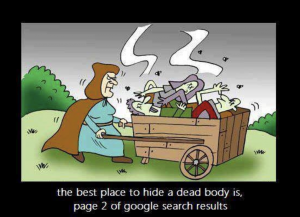Written by Beth Downey
Because I build websites, one of the more frequent questions and requests I field is about SEO. SEO, for the unfamiliar, is Search Engine Optimization. In short, it’s how you get your website to the first page of a Google search.
Full disclosure, I am NOT a SEO expert. I don’t have to be a full-fledged expert to know a few simple tricks to make a website rank higher. These are three modifications that make a difference in search ranking:
- Be https compliant
- Be mobile friendly
- Use “alt” tags
Be HTTPS Compliant
July 2018 was Google’s deadline for https security on websites and if you use Google Chrome, that’s around the time you started seeing the “not secure” warnings.
HTTPS compliance focuses on website security. HTTP stands for “hyper text transfer protocol”. HTTPS is “hyper text transfer protocol secure.” What is the difference? Simply, HTTPS is is the secure version of HTTP, the protocol over which data is sent between your browser and the website that you are connected. When clicking on a https compliant website, the information between your computer and the server of the website you’re communicating is encrypted. Encrypted means the information is scrambled between the two in order to keep information safe from hackers. To be https compliant, you’ll need to get a SSL (“secure socket layer”) certificate through your hosting company. Once you’ve got the SSL certificate, it will need to be installed and activated. Then, you’ll want to redirect all http URLs to https.
A secure website will look like this in the URL:
While a non-secure website URL will appear like this:
The shift to better security requires website to be https compliant and as a result Google rewards websites for playing by their rules.
Be Mobile Friendly
Let’s go straight to statistics: “In 2018, 52.2% of all worldwide online traffic was generated through mobile phones, up from 50.3% in the previous year” (Statista, 2018) and “57% of all U.S. online traffic now comes from smartphones and tablets.” (BrightEdge, 2017). Long story short, people are looking at your website on their phone or tablet and your website should conform to those screen sizes. Not only should it conform, the site should perform seamlessly across pixel widths when moving between screen sizes. And in regards to SEO, you guessed it, Google rewards mobile-friendly websites with higher search page rankings.
Use Alt tags
Blind people use the internet by utilizing screen readers. From Disabled-World.com “Screen readers are a form of assistive technology (AT) software application potentially useful to people who are blind, visually impaired, or learning disabled, often in combination with other AT such as screen magnifiers. A screen reader attempts to identify and interpret what is being displayed on the computer screen. This interpretation is then represented to the user with text-to-speech, sound icons, or a braille output.” Below is the alt-tag information of the featured image of this blog post.
When a screen reader comes to the featured image of this post, it will tell the user what is going on in the photo if the alt text information has been included.
As a screen reader crawls a web page, when it arrives at a photo, it relies on alt tags to describe what is in the photo to the user. No alt tag? The user has no point of reference as to what is going on in the photo. We use alt tags to make the internet accessible to all. And you guessed it, Google will reward your website with higher rankings when you add them to the photos you include.
Because most folks outside the Google employee ecosystem don’t know the true secret sauce and because the ball is always moving when it comes to how Google ranks search, it’s hard to say precisely what makes a website have the special magic to rise above others, but keeping current with best practices will ensure that your website rises above those who aren’t in the know.








